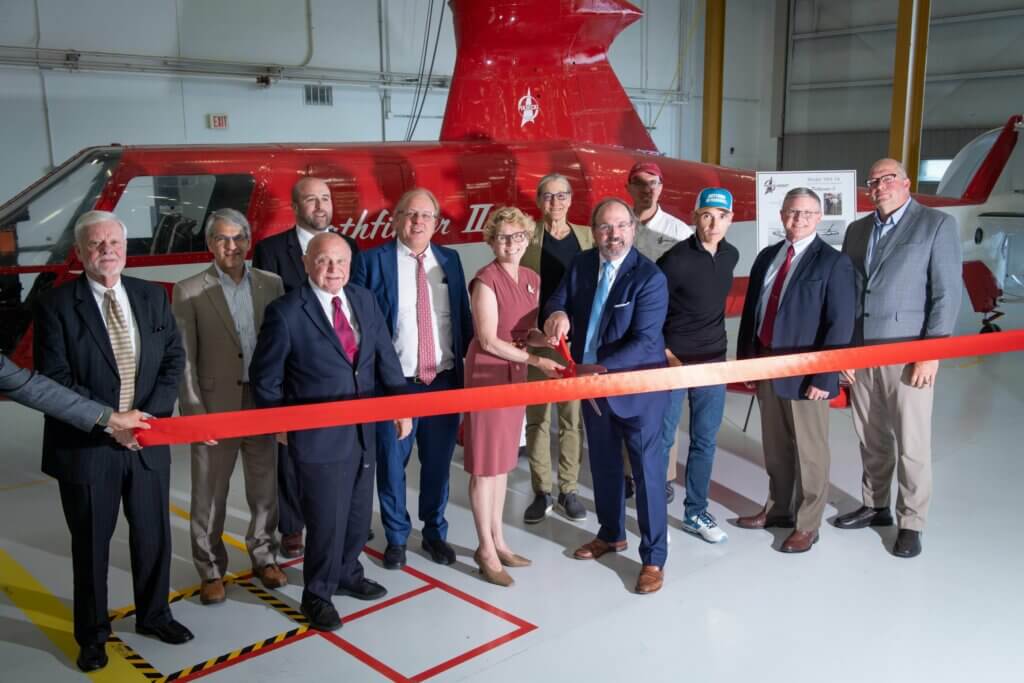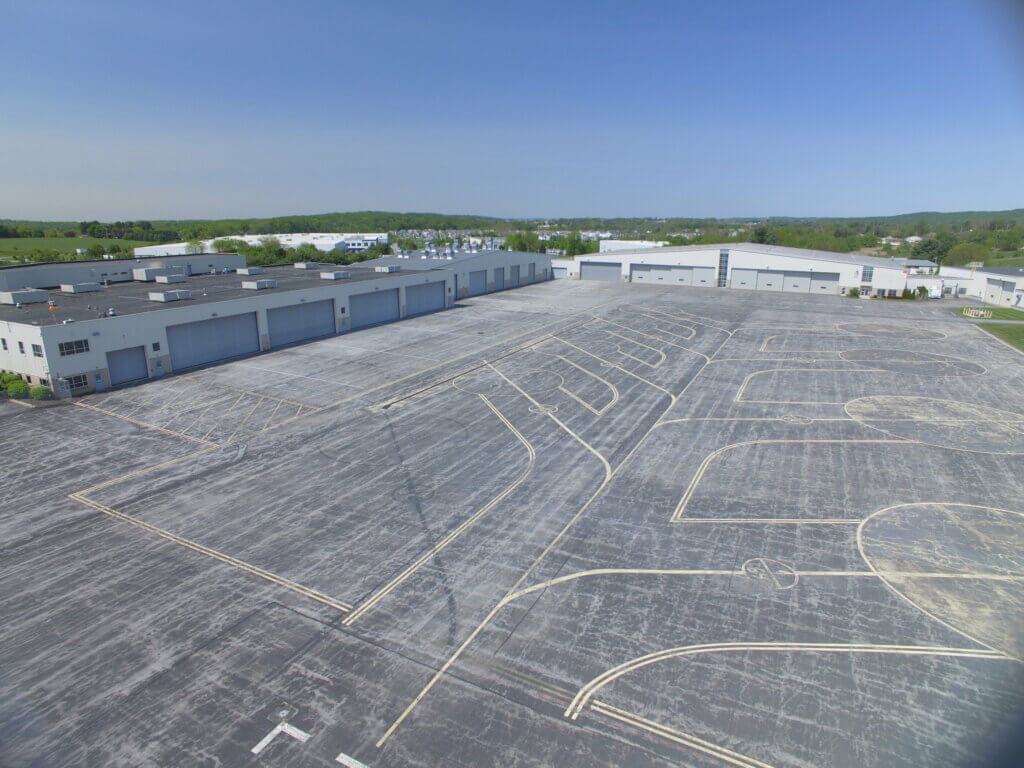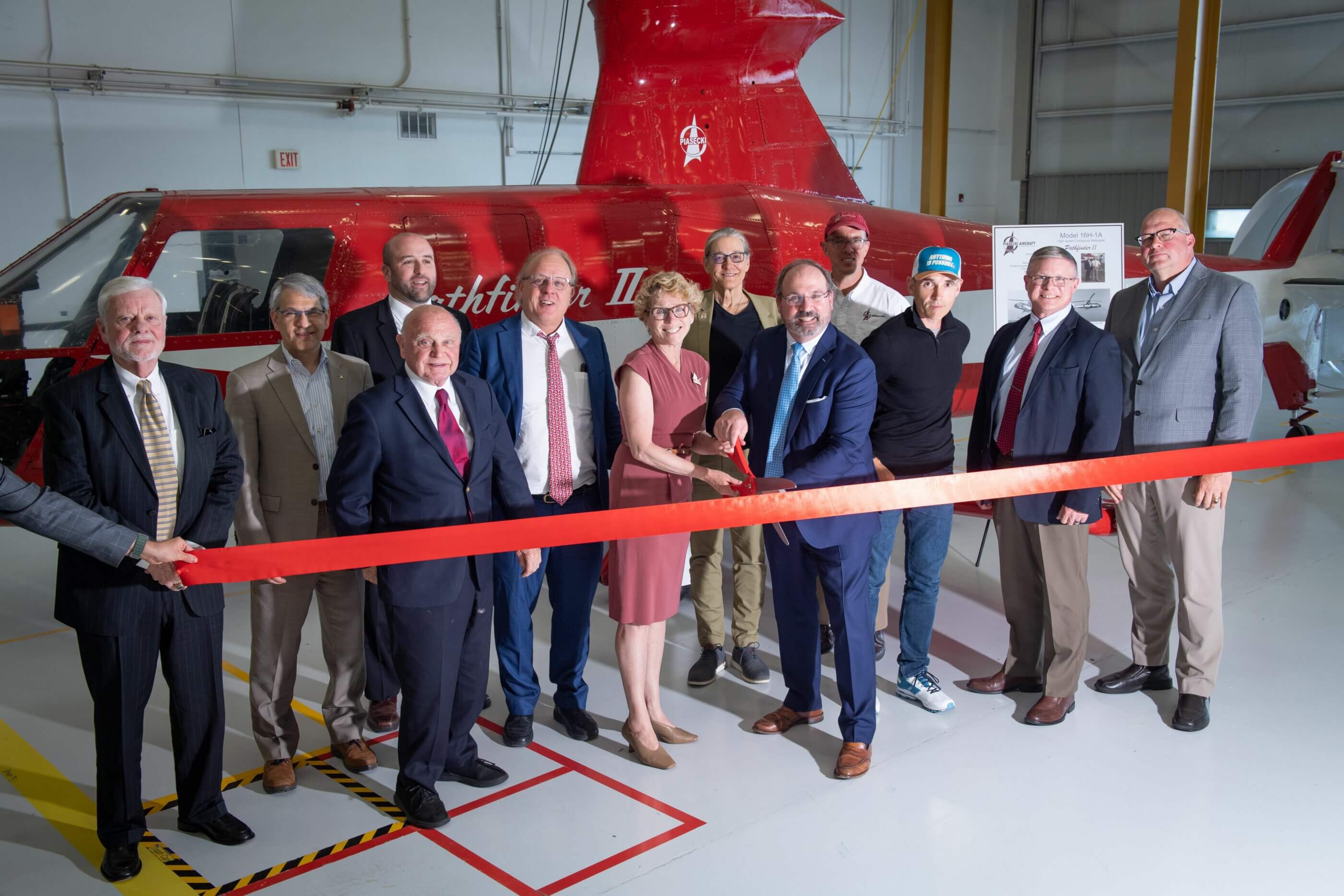Piasecki Aircraft Corporation (PiAC) has acquired the former Sikorsky Heliplex facility in Coatesville, Pennsylvania, with plans to turn it into an advanced R&D center for next-generation vertical take-off and landing (VTOL) aircraft.

Most notably, the facility — the former production and delivery center for the Sikorsky S-76 and S-92 — will be used to build and test Piasecki’s upcoming PA-890, a zero-emission rotorcraft powered by hydrogen fuel cells.
The Coatesville site is just 30 miles west of PiAC’s headquarters in Essington, Pennsylvania, and offers 219,000 square feet of workspace. Once redevelopment work is complete, the facility will be home to engineering development, aircraft assembly, paint and finishing facilities, and a well-equipped production flight test and delivery center.
John Piasecki, CEO of PiAC, told Vertical that the decision to expand into the Coatesville facility was driven by the success of the company’s R&D programs (with several transitioning to ground and flight test efforts), and the availability of an existing helicopter plant on PiAC’s doorstep.
“Helicopter plants don’t grow on trees, and Lockheed/Sikorsky’s decision last year to close the plant down really was an opportunity for us,” he said. “There is a huge cadre of very skilled workforce local to southeast Pennsylvania — and the Coatesville area specifically — and it’s a great opportunity for the company.”

The acquisition was celebrated with a ribbon-cutting ceremony May 31 at the Heliplex facility, with work to convert the facility to PiAC’s requirements set to begin immediately. This includes changes to some of the roofs, a reconfiguration of the engineering area, digging out loading docks and some modifications to the IT system. The company hopes the facility will be ready for operation by the fall.
It has already begun hiring staff for the expansion, and said up to 400 workers could be based in Coatesville by 2028 as the PA-890 enters production.
Set to be the world’s first zero-emission hydrogen-powered compound helicopter, the slowed-rotor winged PA-890 also promises up to a 50 percent reduction in direct operating costs and reduced noise, compared with traditionally-powered helicopters.
ZeroAvia, a leading developer of hydrogen-powered systems for fixed-wing aircraft, is developing a high temperature proton exchange membrane hydrogen fuel cell for the aircraft, as well as for other VTOL applications.
Piasecki said the PA-890 program is “being vigorously executed” and the company hopes to fly ZeroAvia’s propulsion system in a conventional helicopter by the end of this year.

“It’s the kind of thing Piasecki does really well, transitioning from lab to flight and we’re very excited about it,” said Piasecki. “It will be a major milestone on the PA-890 program, because it’ll demonstrate the technology and actual operation.”
The airframe for the demonstration will be an edm aerotec CoAX 2D — an ultralight coaxial helicopter. The aircraft’s piston-powered engine will be removed and replaced with the hydrogen fuel cell.
“It’s a proof-of-concept demonstration — this is not a product,” he said. “It’s an excellent learning tool for us as we figure out how best to implement hydrogen fuel cell systems on a real manned aircraft.”
Other R&D efforts underway at PiAC include the aerial reconfigurable embedded system (ARES), which is a modular tilt-duct VTOL that can be manned or unmanned; and adaptive digital automated pilotage technology (ADAPT) — a cutting-edge flight control package.
The R&D programs that PiAC already has ongoing and that it expects to undertake over the next four years “will easily fill about a third of the [Coatesville] facility,” said Piasecki.
“We are in discussions with some major aerospace partners, both on the OEM side and the supplier side, about cohabitating there, and as our programs succeed and expand, we will expand our footprint there and ultimately hope to be producing products like the PA-890 out of that facility.”
A Move-In Facility
While Sikorsky has cleared out much of the equipment it had in Coatesville, integrated infrastructure — such as cranes, fireproof hangars, scales and tools — meant it was a “move-in type of facility,” said Piasecki.
“The open space and the co-location of engineering space and open space are very useful for developmental programs, where engineers need to have direct access to the factory floor where they’re assembling the aircraft and implementing changes,” he added.
The ribbon-cutting was attended by Representative Chrissy Houlahan (Congresswoman for Pennsylvania, 6th District), Rick Siger (Pennsylvania Secretary of Community and Economic Development), Martine Rothblatt (founder of United Therapeutics and SiriusXM satellite radio), Val Miftakhov (CEO of ZeroAvia), Dan Crowley (CEO of TRIUMPH), Mike Stanberry (CEO of Metro Aviation), and Mike Hirschberg (executive director of the Vertical Flight Society).

“It’s incredibly exciting to see a company like Piasecki, a long-time aviation industry innovator, continue their commitment to developing new technologies like the PA-890 hydrogen fuel cell-powered helicopter right here in PA’s sixth district,” said Representative Houlahan in a press release announcing the move. “Piasecki’s Coatesville expansion will revitalize the manufacturing facilities which were formerly home to Lockheed Martin/Sikorsky Heliplex. I’m proud to support their vision.”
Piasecki said Representative Houlahan, along with Pennsylvania Governors Tom Wolf and Josh Shapiro, the Chester County Commissioners, the Chester County Economic Development Council, and Senator Robert Caseyhad, had played a crucial role in helping support PiAC’s expansion to Coatesville.
“The financial wherewithal to put it together was a combination of the company’s stockholders supporting it and the state and local [governments], and then I have to give a lot of credit to the Meridian Bank — they are a regional bank that is very committed to economic development,” he said.
Piasecki said the move into Coatesville showed his company’s commitment to expanding its business beyond traditional R&D activities — and would demonstrate how serious it was about bringing the PA-890 to market.
”Innovation, if it’s not applied, is just interesting,” he said. “This is a commitment by the company to expand its expertise and technology into practical applications.”









